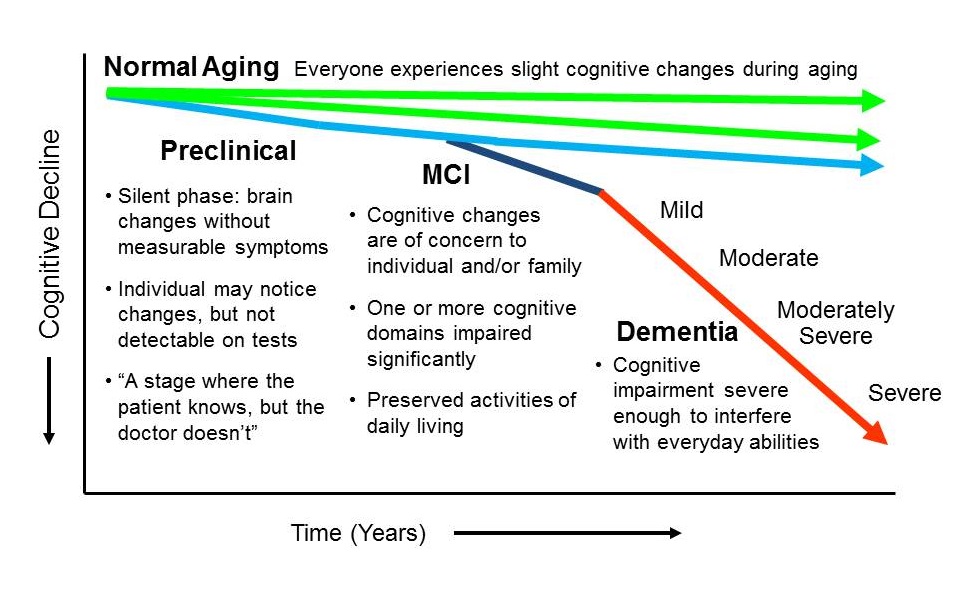Mild cognitive impairment (CSD) is a transient condition between cognitive changes in normal aging and an early state of dementia. This situation is now recognized as a pathological condition, more than as a normal age-related process.
In fact, it is specifically used to designate a group of individuals who have a certain degree of cognitive decline, but whose severity is insufficient to meet the dementia criteria. To differentiate mild cognitive impairment from dementia, it is necessary to focus on the limitations that this impairment causes in the person in their daily performance.
- Well?How to detect this onset of dementia?What are the main symptoms of mild cognitive impairment?What causes the onset of this disorder?Those are the questions we’ll try to answer next.
The expansion of the age pyramid in the larger strata, promoted in part by increased life expectancy, increases the number of people affected by cognitive changes and possible dementia syndromes, which is of particular interest, especially if older age is thought to be a risk factor developing this pathology.
Other sociodemographic studies indicate a higher prevalence of this deterioration in the female population of 71 to 80 years, mainly in women married to a family and with few years of schooling, but that does not mean that there is a cause. -and effect relationship between being female and having a slight cognitive decline, of course.
In other respects, the causes of this disorder remain unknown and a topic of study for researchers who are currently working to clarify outstanding issues.
Patients with CSD mainly show memory impairment, especially episodic memory, being aware of their deficits; In this regard, several studies have already shown that episodic memory impairment functions as a future indicator of Alzheimer’s disease over the next 1 to 7 years since its onset. initial evaluation.
Other cognitive impairments, such as language disorders (difficulty finding the desired word), attention (difficulty concentrating or having a conversation), and spatial vision skills (difficulty orienting themselves in familiar places) can also be a specific type of mild cognitive impairment.
On the other hand, psychological and behavioral symptoms are also common. They may include hallucinations, agitation or aggression and/or depressed mood, among others. The presence of such symptoms may promote a slight cognitive decline that develops more quickly, so the quality of life of the patient and caregivers is negatively affected.
In short, the diagnostic criteria for mild cognitive impairment would be:
First, given an indication of mild cognitive impairment for both you and a family member, it is most important to consult your doctor as soon as possible. Proper and early evaluation can help prevent the disorder from progressing or in addition, it will be important to rule out that this deterioration is the result of specific types of brain damage, such as stroke. After evaluating and confirming the CDD diagnosis, the next step is to plan the intervention. .
In recent years studies have been conducted with the same drugs used to treat Alzheimer’s disease and most of these studies show that this type of treatment is not effective at stopping the progression of mild cognitive impairment.
With regard to non-pharmacological approach, it has been observed that cognitive interventions may be more effective at improving memory, performing daily activities and improving patients’ mood; cognitive interventions include cognitive training programs, cognitive stimulation and cognitive rehabilitation. With regard to physical exercise, several studies have shown that it has a protective effect on Alzheimer’s dementia and also on CSD.
Decidedly, although in many cases it is not yet involved to reverse the deterioration to which we refer, the truth is that the door of hope remains open, thanks to the volume of research being done around the DCL. On the other hand, in the search for new and more effective forms of intervention in the face of suspicion, the most important thing is to act quickly and promote protective factors so that the disease does not progress and becomes increasingly limiting.

